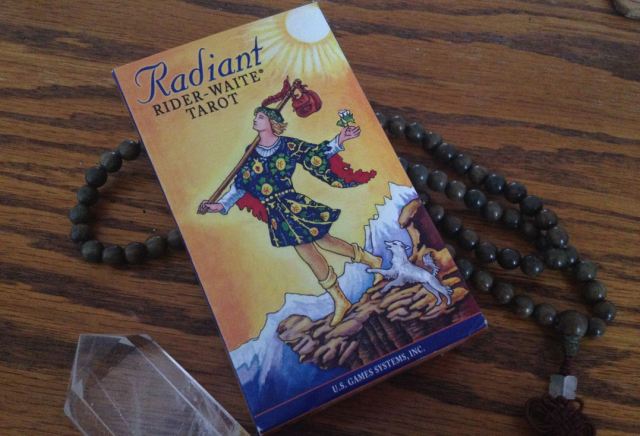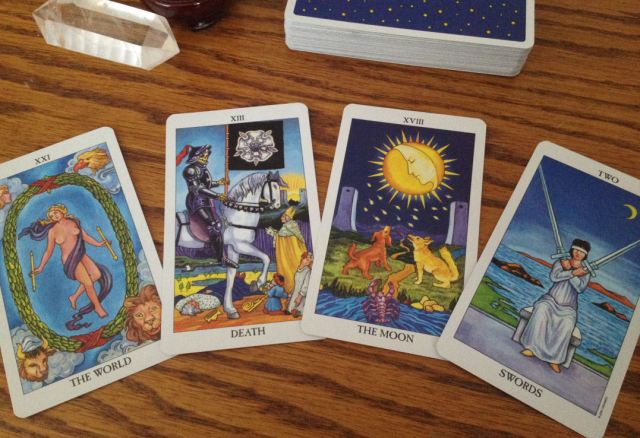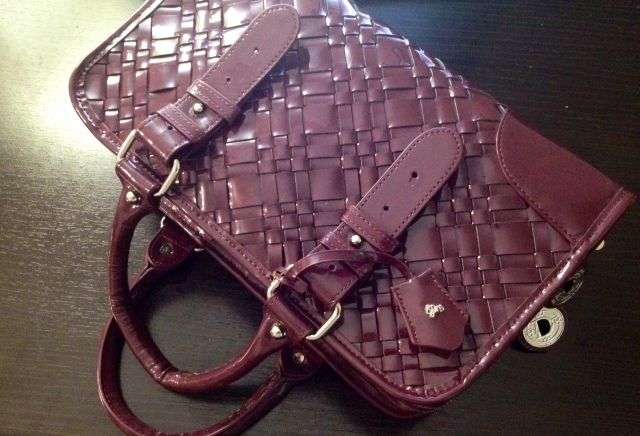
The Efflorescent Tarot is a self-published deck by artist Katie Rose Pipkin that you can order through Etsy. It comes in two options, colored as shown in this deck review or black and white. View all card images, in both black and white and color at Pipkin’s website here. The deck name could not be more appropriate, because the artwork here truly represents the efflorescence of Pipkin’s extraordinary artistic talent. I have a particular weakness for ink-drawn decks and the Efflorescent Tarot is an incredible demonstration of the medium.

The deck comes in a white box made of thick cardstock, which is relatively sturdy but not indestructible– by the time my order reached me, there were already a few minor dents in the box. A full-color reproduction of the Ten of Pentacles appears on the lid. I love Pipkin’s rendering of the Ten of Pentacles here.
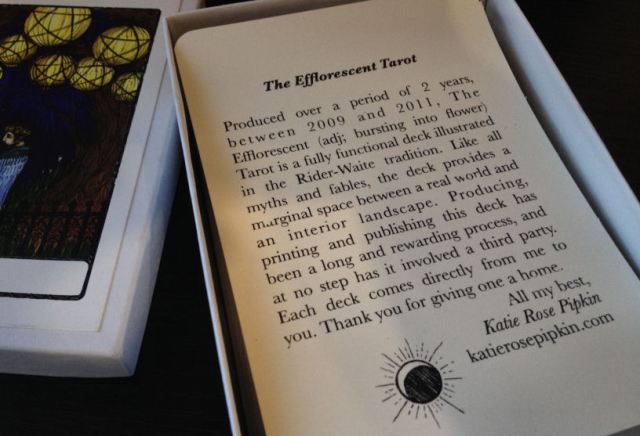
There is no little white booklet and the only introductory material that accompanies the deck is that single card you see in the above and below photos. That’s all you need, really. The Efflorescent Tarot is a Rider-Waite-Smith-based deck and if you’re familiar with RWS, you’ll read just fine with this deck, no explanations needed.
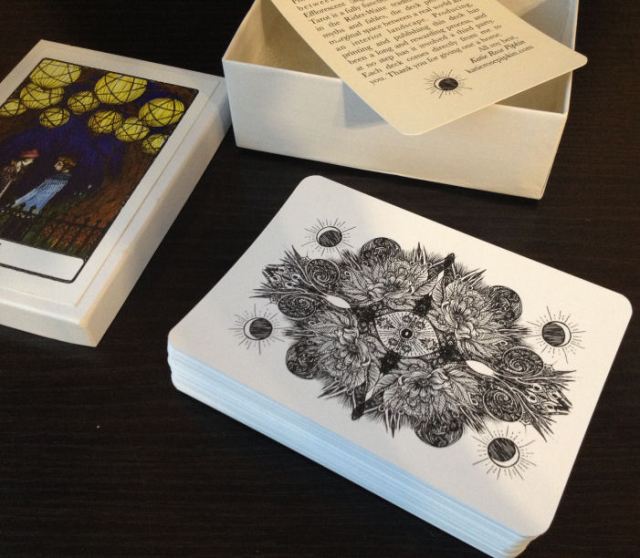
I would not call the deck a clone, however, because Pipkin does deviate from traditional RWS imagery in a few of the cards to give her own interpretive spin, like the Ten of Pentacles on the lid that you see above and also in a few other cards, which I’ll mention later. All card images are available for your viewing pleasure on Pipkin’s website here.

